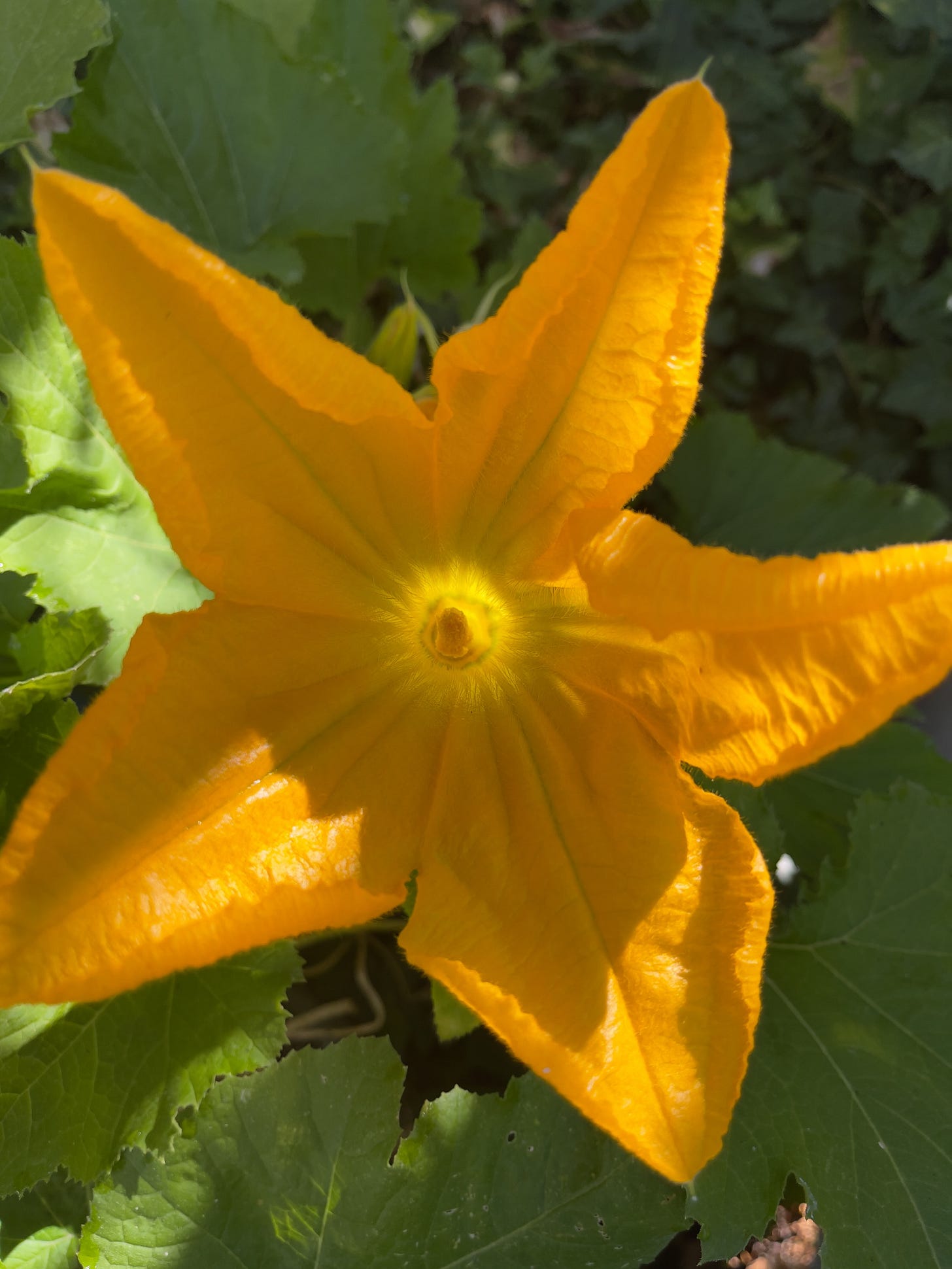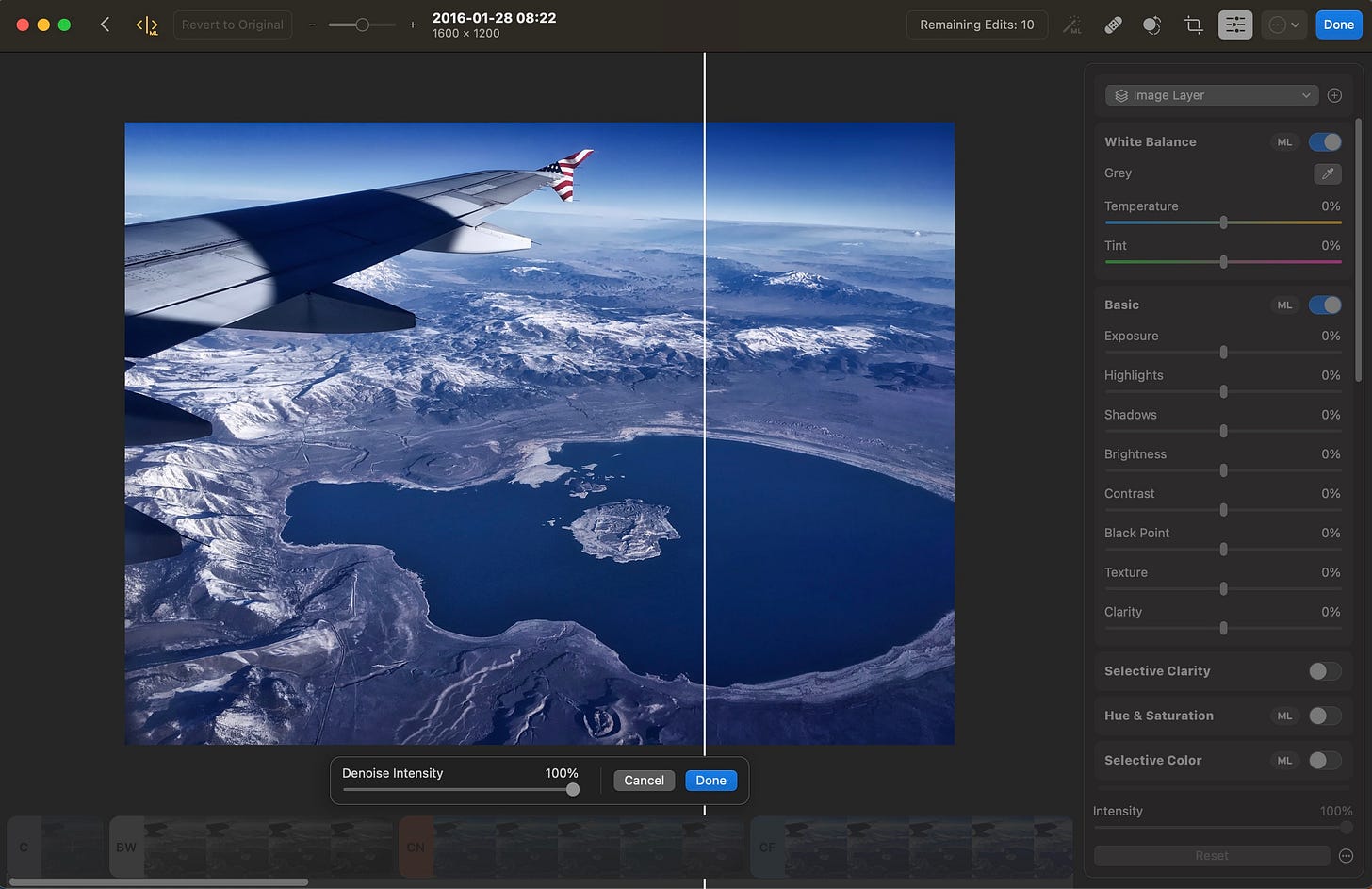About half of all the pictures I take are with an iPhone 12 Pro Max. And most of those images are in the HEIC format. But on occasion, I do tap the RAW button.
I’ve gone back and forth about the value of RAW files from a smartphone. In all honesty, they don’t seem nearly as editable as those from my interchangeable lens cameras. Yet, when I know that I might want to squeeze as much quality from a file as possible, I do go RAW.
Here’s a recent example.
When I wandered out into the garden this morning, there was a very pretty squash blossom that looked great in the early day light. It wasn’t so spectacular that I was motivated to go back in the house, get my camera, and set up a mini-shoot. But it was attractive enough for an iPhone shot.
I really liked the glow in the center of the flower. And I knew that I would be cropping in and emphasizing that bit of the image. So I switched to RAW capture.
I opened the file in Photometer 3.1, applied Super Resolution to give me more cropping room, and played with a handful of adjustment sliders. The file held up very well as I was stretching the limits of editing - certainly much, much better than if it had begun its life as a Jpeg.
So, going back to our original question: Should we shoot RAW with our smartphones? Yes, when we know ahead of time that we are going to push the envelope of editing, it is helpful.
As for the rest of the time… HEIC works great. And those files take up far less room in memory.
My Thanks to an Unknown Photographer
Here’s the story of a manila envelope filled with old snapshots that was handed to me at a family gathering, and the lessons that followed as a result.
Speaking of Photomator…
They’ve just released version 3.1 of this Mac/iOS only AI-powered image editor, and it does a great job of blending the traditional tools that we like with some clever new ones that do incredible things. Photomator 3.1 is also very affordable and integrates seamlessly with iCloud, so you work is always backed up and available on all devices.
If this sounds interesting to you, it’s the lead story on this week’s TDS Photography Podcast.







